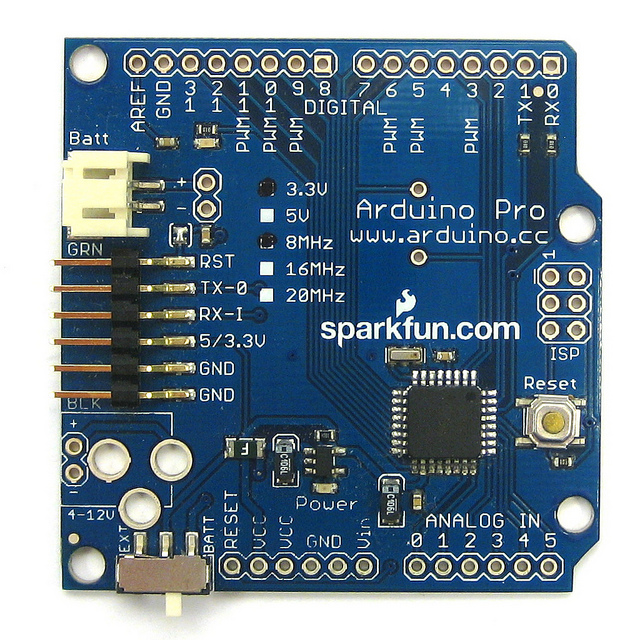Tinkering culture has slowly entered the mainstream. Once the province of Popular Mechanics and Wired, coverage of the making and hacking trend has been appearing regularly in such unlikely periodicals as the New York Times. It’s hard getting adjusted to big media gushing about geek wads tweaking bits and bytes and building fire breathing robots in the back yard. I’m used to having a little more privacy. However, the growing power of electronic devices, and their expanding fanbase has revealed the dusty backwaters of DiY elektro nerds. The appeal is obvious.
The roots of tinker culture stretch back even to the early 20th century, when the commercial radio spawned home-built radio clubs. By the 1950s, a fully grown, rich community of ham radio aficionados was circulating tinkering tips, tricks, and QSL cards. With the advent of the transistor and later, home computing, it became possible to play around with a wider range of tools and projects. The computing clubs, birthplace of such giants as Apple, still remained at the cultural margins by the 1970s, but provided a fertile ground for learning, experimentation, and associated specialist books and magazines. The homebrew kids eventually grew up, and often ended up getting real jobs as industrial engineers, where the growing ubiquity of inexpensive microcontrollers hit its stride in commercial applications. Essentially simple computers on a chip, these industrial microcontrollers fulfilled the mundane chores of industry such as closing valves, filling bottles, sensing smoke and the like. What’s changed is that microcontrollers possessing computing power rivaling the Apollo spacecraft are now available for under $0.30. The programming of such computers has become comparatively easy. As featured in a recent NYT article, one of the heavy hitters in the micrcontroller realm has been the Arduino, a small programmable computer that has become the darling of hobbyists, artists, and nerds worldwide.
The Internet has made it possible for distributed communities of practice to emerge, occupying the social spaces that used to be fulfilled primarily by computer clubs and BBSes, and electronics and radio magazines. The Make Magazine franchise (now owned by O’Reilly) and Instructables websites figure prominently among them. Today’s tinkerers can now more easily share knowledge, experiences, and organize meet-ups. The increased profile has increased demand and publishers are keen to play a role in this landscape. O’Reilly has long had a reputation for producing good books covering the latest technical topics, particularly in computing. On the heels of a few recent publications covering the Arduino, one of its latest releases is the Arduino Cookbook, by Michael Margolis. Although the bookshelves may be burgeoning with a surplus of Arduino-focused titles, including the Arduino Team’s own contribution by Massimo Banzi, it provides a welcome addition to the range.
True to its name, the Arduino Cookbook provides a comprehensive array of recipes for covering a broad range of topics – from simply blinking LEDs through to moving objects relays, motors, and the like. There are dozens of examples, with clear instructions on how to build the various sensing, transmitting, and interactive projects that Arduino makes possible. The chapters are organized around topical areas, which makes it easy to thumb through to a particular need and find a recipe. Want to connect two Arduinos wirelessly by radio? Turn to the radio chapter. If you’re more interested in robotic objects and movement, dip in to the robotics chapter. The Arduino Cookbook’s chapters are arranged in a sensible sequence with increasing levels of technical difficulty. Although the book is billed as a “cookbook” it is more of a cooking course, than a collection of dishes arranged by category. It gradually leads you from cracking an egg, to making a soufflé. Beginners needn’t get too worried about the more complicated topics such as writing to local memory or writing libraries. Conversely, advanced techies still have a useful resource at hand for topics they may not have covered, or as a refresher on unused skills.
The book also benefits from clear, uncluttered illustrations and well-commented, readable code. These are essential when trying to build new interactive projects. In this genre of literature, they are something that authors and publishers do not always get right. Key technical concepts are explained lucidly, and Margolis has made every attempt to clarify the complex. Although it is positioned as a book for people with some previous programming experience, it is written for novices, who want to get up to speed.
What the Arduino Cookbook doesn’t have is a great deal of in-depth discussion about the theory behind programming or building electronic circuits. There are many other books out there which cover these topics in greater depth. This is in keeping with the cookbook format. You get what you need to know without having to understand what makes a soufflé rise or fall. For those who want to engage in more advanced work, without having to know the deep theory, it is still possible to make complex creations without having to have a perfect knowledge of their underlying principles. You get enough information from the test to get the job done, and still are able to modify things to suit you own needs. I can’t think of anything more straightforward than that.





